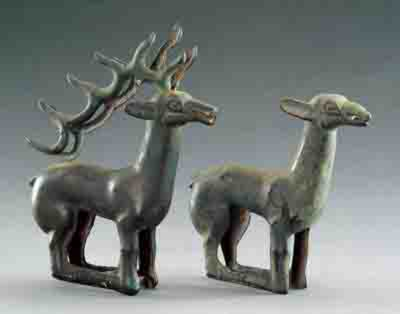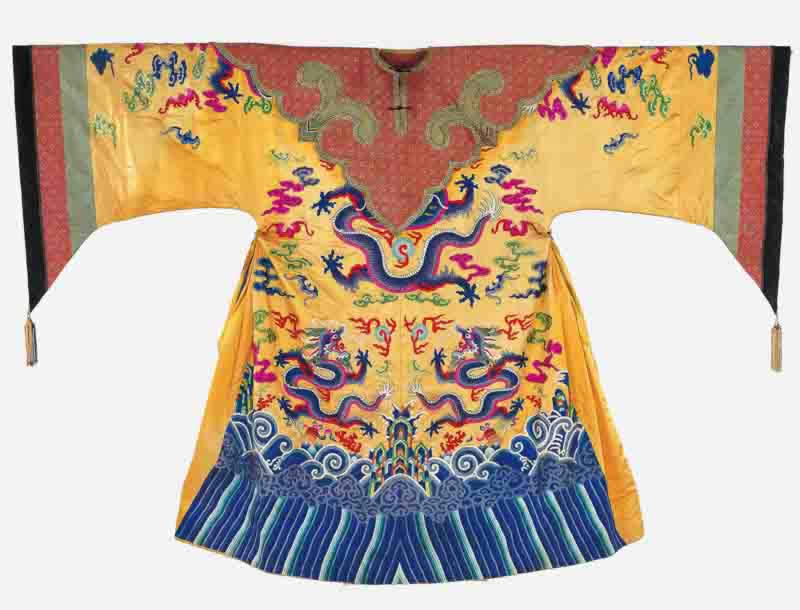|
|

豪華絢爛!The history of nomadic horsemen and the largest emipre in the world history revealed through national treasures of China.
|
The Mongol Empire was established by nomadic horsemen under the leadership of
Genghis Khan in 1206. By the latter half of the 13th century, the empire under his grandson, Kublai
Khan, was no longer confined to China but stretched from Vietnam in the south,
to Moscow in the north, the Mediterranean in the West to the Sea of Japan in the
East, making it the greatest contiguous empire in history.
This will be a large-scale exhibition, introducing the mystery-shrouded world of
Genghis Khan and the great Mongol empire. The Inner Mongolia Museum of the
People's Republic of China contains a collection of over 130,000 art and
archeological items relating to the northern nomadic horsemen and the Mongol
Empire, making it the largest of its kind in the world. This exhibition will
present decorative items dating from the 4th century B.C. to the 9th century
A.D., prior to the appearance of Genghis Khan, those belonging to his empire
when it was at its peak, as well as those from the late Ming and early Qing
dynasties to decline of the Qing; a total of 159 exhibits of which 54 special
exhibits are Chinese 1st National Treasure. |
|
|
Advance tickets now available in discount prices (20% off).
Sold at YPM, YBS (Kofu and Fujiyoshida), and LAWSON. |
■Schedule
Saturday. April 17 - Monday. May 31, 2010
■Hours
9:00 - 17:00 (Last entry 30 minutes before closing)
■Closed
Tuesdays (Exceptions: Open on Tuesday. May 4. Closed on Thursday, May 6)
■Admission Fee
| |
Regular Fee |
Discount Fee for Groups (20 or more) and tourists staying in Yamanashi |
Regular and Special Exhibition Discount Ticket |
Adults |
1,000 yen |
840 yen |
1,240 yen |
High School/ University Students |
500 yen |
420 yen |
580 yen |
Elementary/ Junior High School Students |
260 yen |
210 yen |
290 yen |
※The following persons will be free of charge for regular exhibitions.
・ Regular admission is free for persons over 65. Please show proof of age (driver's license, passport, etc.) when entering
・Persons over 65 living in Yamanashi.
・High/Junior High/Elementary/Special Aid School students on Saturdays or on school trips.
・ Persons with disability and one person accompanying them are admitted free of charge.
※Tourist discount is applied to those staying at hotels or inns in Yamanashi, on the day of the stay or the day after. Please show hotel reciepts or reservation coupons.
■Organized by: Yamanashi Prefectural Museum, The Yamanashi Nichinichi Shimbun, YBS Yamanashi Broadcasting System, Ghengis Khan and the Magnificent Mongol Empire Planning Commitee
■Supported by: Embassy of People's Republic of China, The Asahi Shimbun Kofu, NHK Kofu, FM Kofu, FM Fuji, The Sankei Shimbun Kofu, TV Asahi Kofu, TV Yamanashi, Nihon network Service, The Mainichi Newspapers, Yamanashi Shinpou, The Yamanashi Chuo Bank, The Yomiuri Shimbun
■In Cooperation with: Inner Mongolia Museum of the People's Republic of China, Japan Airlines, Fujisan Makaino Temujin Co. Ltd., 学校法人 Komazawagakuen Komazawa Women's University
■Acadeic Supervison: Prof. YOSHIDA Junichi (Faculty of Letters, Arts and Sciences, Waseda University.
Head of the Japanese and Mongolian Association).
■Planning and Production: Toei Company, Ltd.
|
|
■Composition and Highlight of the Exhibition |
【Section 1 : Mongolia During the Warring States Period】
Archaeological finds belonging to the 5 steppe nomads (Donghu, Xiongnu, Xianbei, Tujue, and Khitan), spanning from 4th century B.C. until the rise of genghis Khan will be exhibited, featuring decorative items. |
Eagle Shaped Gold Crown
(National Treasure/ Warring States Period)
|
|
Deer Shaped Bronze Ornament
(Warring States Period)
|

|
Deer Shaped Gold Crown Decoration
(National Treasure/ Northern Dynasty) |
|
|
Golden Mask
(National Treasure/ Khitan Liao Dynasty) |
|
|
◇
|
【Section 2 : The Sudden Rise of the Mongol Empire Within a Single Generation】
This section will focus on the period afetr Genghis Khan (Temujin) has united various nomadic people and established the Mongol Empire in 1206, How he conquered and rompted the interaction of the east and west will be presented through various artifacts. Relics of Genghis Khan will be exhibited. |
|
Genghis Khan's Saddle for Battle
|
|
Tricolored Glazed Incense Burner
(National Treasure/ Yuan Dynasty) |
|
Gilt Bronze Statue of Seated Bodhisattvat
(National Treasure/ Yuan Dynasty) |
|
|
◇
|
【Section 3 : The Mongols During the Ming and Qing Dynasties】
During the Ming and Qing dynasties, the territory of the Mongols retreated to Mongolian Plateau, but ethnographic materials from this period still contains fascinating treasures. |
Throne with Dragon Engravedn
(National Treasure/ Qing Dynasty) |
|
Imperial Prince's Hat with Ruby
(National Treasure/ Qing Dynasty) |
|
|
Clothe Weaved with Peacok's Feather
(National Treasure/ Qing Dynasty) |
|
Gilt Bronze Statue of Mahakala
(Qing Dynasty)
|
|
Clothe with Dragon Design for Tibetan Cham Dance
(Qing Dynasty) |
 |
|
| |
|
|

